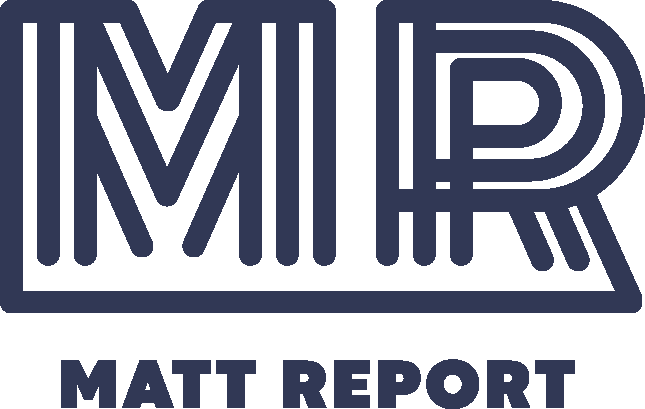In part one of connecting the dot’s of web marketing series, we discussed building a foundation. Today we talk about building your hub.
Recently, we mapped out the foundation of our online business. Sketched out major features and functions we plan to implement then cut out anything that could hold us back from agile marketing. We prepared ourselves to dive into connecting the dots of web marketing.
Now we’re going to look at building your online marketing mecca.
Your website.
Your hub.
Moving forward, understand that everything should begin and end here. It’s your brand, your content and most importantly you own it.
Why You Need A Hub
Let’s begin by looking at the theory and reasoning for building a hub.
When I was thinking about describing this very important step, a few phrases came to mind:
- Home base
- Hub
- Digital bucket
- Mecca
- Starting point
- Brain
- Corner stone
- Heartbeat
After much thought, the choice was hub.
I’m thinking central train stations here. Hundreds, thousands, to millions of people moving in and out of this one central hub. Hopping on different rails to venture to new destinations. Discovering new things when they arrive.
Hub also works when we discuss our stations. That’s right, our web marketing consists of hubs and stations.
The hub is essential to our web marketing because this is where we lead our traffic. Customers come to place orders, learn about our cause, or sign up for our newsletter.
This is where the important actions should take place.
The unique content to exist.
The brand to live.

Own Your Hub
When we start talking about about stations, we’re going to discuss places like Facebook, Twitter, LinkedIN and Google+.
Guess what you don’t own on the aforementioned sites?
Your content.
It’s also safe to say you don’t own the direction, the dialogue and the connection with your following.
At any point, the plug can be pulled on your account or page. You could violate terms of service (who really reads this anyway) or a major new feature could change the way visitors access your information.
All that hard work and time put into building up your following has now been swallowed up by fate.
The hub is yours. No one can delete your content. No one can tell you what to do with it.
Your Hub, Anywhere
Where does your hub exist?
It’s a web site, blog, landing page, or professional profile on a web server somewhere. Indexed by major search engines and found through searching on the open internet.
No one needs a special account to access your hub. There are no privacy or filter settings in place that could stop you from getting a visitor’s eyeballs on your hub.
Let’s be clear on this: Your hub is not a Facebook page, Twitter stream, or LinkedIn profile.
Why do you say this Matt?
First and foremost, as unbelievable as it sounds, not everyone is using social media. You’re putting up an entry point barrier by relying on this method. Further, search sucks on these platforms (as of this writing.) If you don’t believe me, try for yourself, then come back and leave a comment.
Second, read the last section!
You don’t own the content. It’s theirs, thus, they block out access to search engines. With a proper hub, you can tell Google, Yahoo, and Bing where your site is, what it stands for, and when it’s updated.
Onward!
Your Hub, Your Way
“Clean your room!”
Remember that one?
Guess what? You don’t have to anymore.
You can design an ugly website or a fantastic website. No navigation or multi navigation. One color or one hundred colors.
I won’t spend very long on what it takes to design a great site, just be aware it’s important. Very important really.
It allows you to set yourself apart from the competition and others around you. It entices visitors to click through, sign up, purchase, and feel comfortable browsing. It should reflect your brand and your image. The design should reinforce why someone should buy or consider hiring you.
A lot of folks underestimate design. Don’t be one of them.
Your Hub, A Tape Measure
Sorta.
With your own hub, you can track where visitors are coming from. Google Analytics is the most popular web analytics system on the web. I don’t consult, build, or optimize any sites without it.
Because you own the traffic to your hub, you can dissect it anyway you want. Try this with your LinkedIn profile. Sure Facebook has insights, but it’s not yours. Twitter? Google+? Nada.
Eventually we will discuss some basics of analyzing your traffic and setting up goals. For now, in the back of your mind, understand the value in this.
Another metric to success and value to owning your hub, you can set your own call to action.
Think about it.
When you’re interacting with Facebook, do they want to direct people to your one page? Does Twitter want everyone to just follow you? Does LinkedIN want you to be the only company?
Nope.
They want you to constantly share, tag, comment, list, retweet, follow, and connect with others. Their goal is to build more content that they own. Granted, you benefit from all this and we’ll talk about that, it’s just their platform isn’t about you like your hub is.
Clearly defined call to actions engage a visitor and give you a great starting metric to measure your success.

10 Successful Parts to a Hub
- Great design: Stand out from the crowd, be unique, and create a powerful brand identity. Why not reach for the sky and start to build brand recognition like Pepsi or Cadillac? (More insight? Read this.)
- Call to action: You need to tell customers what to do and fast. Think about when you visit a website. For a split few seconds, you’re whipping the mouse cursor around the screen figuring out where to click. That’s your opportunity. (Learn more here.)
- Targetted landing pages: There are informational pages and there are conversion pages. Better known as landing pages or squeeze pages. Usually these are tied to online ads in attempt to squeeze in a sales pitch and entice an action that you can put a dollar value on.
- Engaging video and photography: Youtube is the world’s number 2 search engine. Enough said. Out of focus and pixelated images that a cheap cell phone can outmatch are a no go.
- Unique content: Here’s your chance to shine. Express to the world why they should pick you. And the best part is, studies show you only need to write at a 5th grade level. Perfect.
- Blog: I’ll hit this real quick, because it’s important and we’ll discuss it further later. It builds constant unique content, it’s your voice, it’s a forum for interaction, and its you engaging in inbound marketing.
- Lead capture: Your list is your gold. You need to capture leads to keep knocking on the door, informing folks of your cause, and reaching out for a sale.
- Social Media integration: A lot more to be said about this topic and we’ll get there. Remember, real time, engaging, promoting, and customer service. Just a few concepts we will cover.
- Analytics: When it comes to reporting and tracking all of this, you need analytics. Even basic counts can help you understand trends that are happening all around you.
- Sweat, blood, and tears: Connecting all the dot’s is not easy. Don’t underestimate what it takes to be successful on the web. It will take a lot of work on your part to make it all come together. These series of posts should really put it into perspective for you and get you to where you want your web property to be.
Conclusion
Whew. Overwhelmed?
Here’s a recap:
You need to build a hub. A hub is your website, your blog, your professional profile, or your landing page.
You build external stations that connect back to the hub. Stations are social media outlets, bulletin boards, guest posts, newsletters and more.
Your Facebook page is not your hub.
There are a lot of moving part’s to a hub. Once they are clearly defined and setup properly, you can begin connecting the dot’s to your web marketing strategy.
Soon enough, you will be on your way to web marketing success. In the next post in the series, we will discuss the how-to build your proper hub.
If you enjoyed this post or learned something from it, please share it, tell your friends, and subscribe to my newsletter here.


Leave a Reply